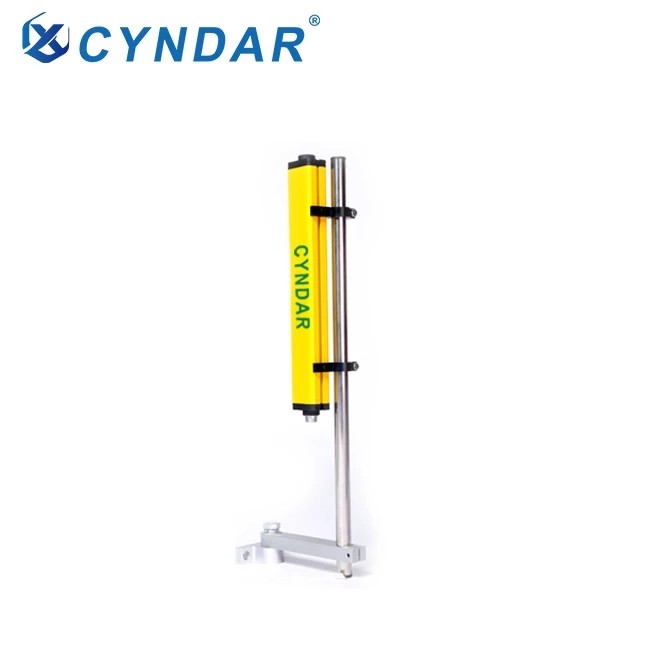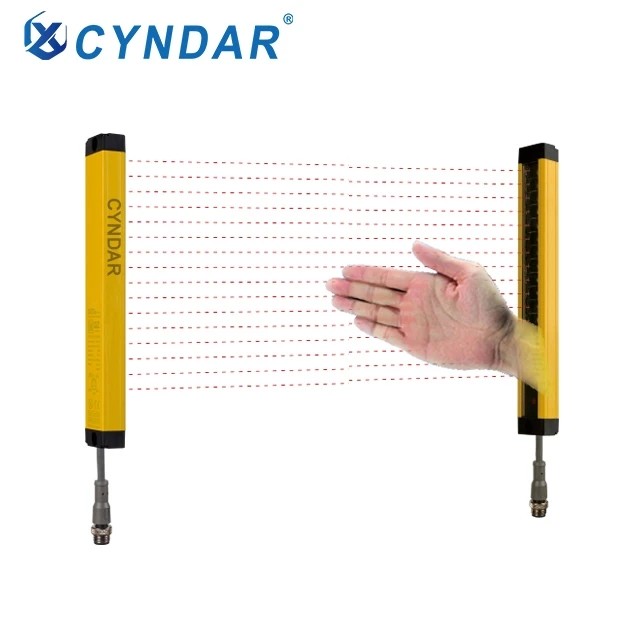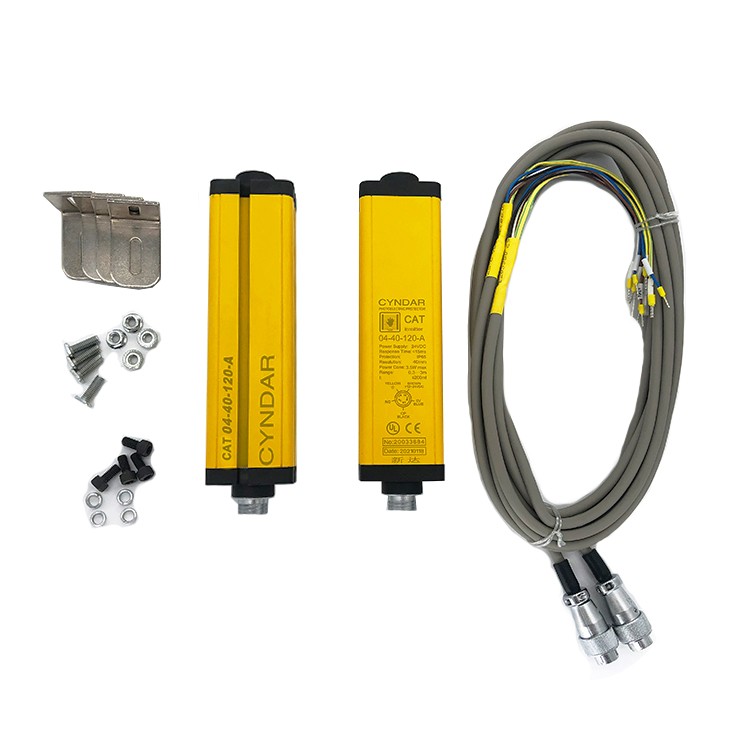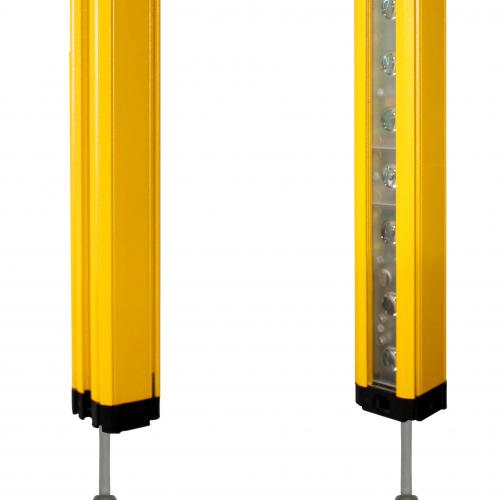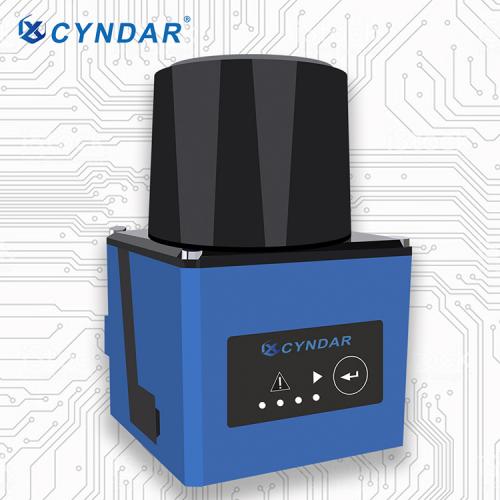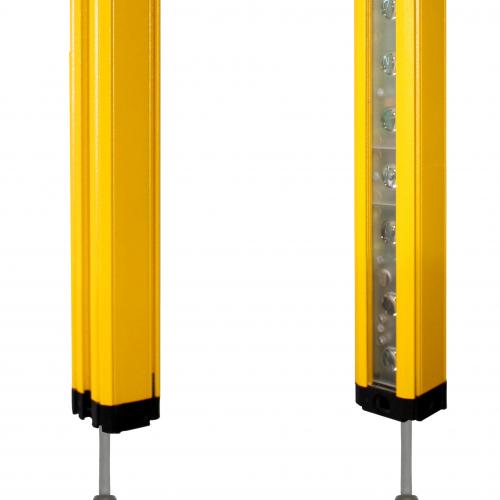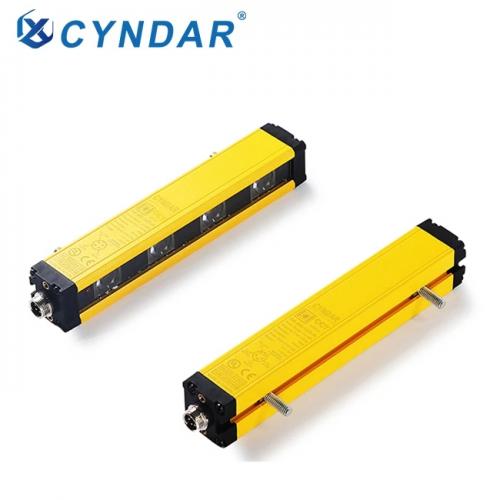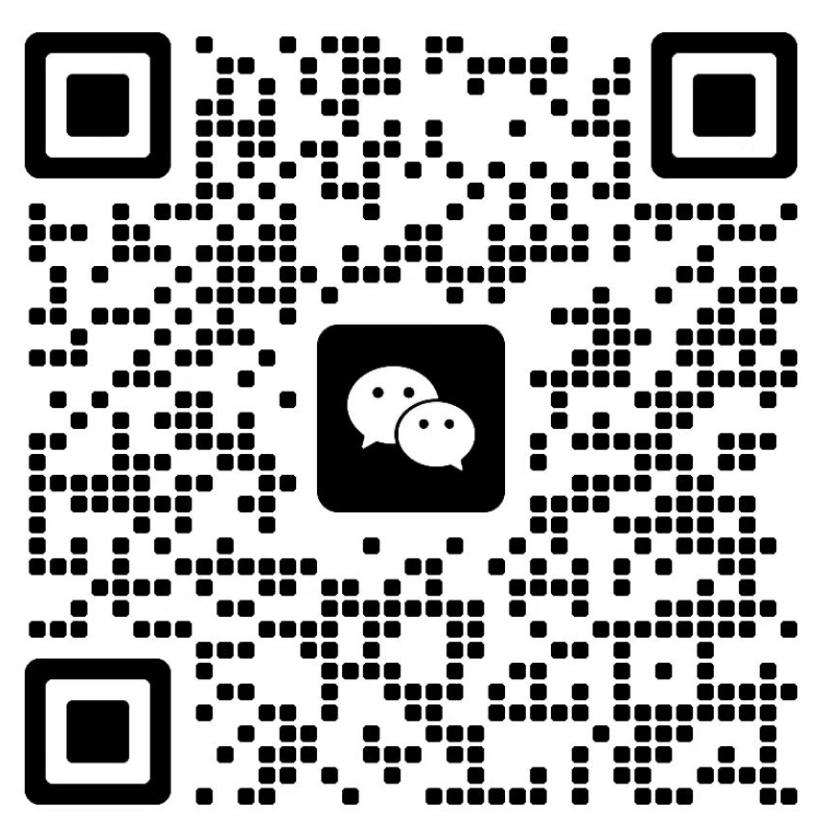CAT Specification Sheet Product features
Product features
The long-distance safety light curtain is a special safety light barrier provided by our company. It can provide a long protection light curtain over 30 meters away according to the needs of customers. The protection height mentioned in the safety light curtain sensor can be simply understood as light The sum of the axis spacing, that is, the distance between the previous light point and the next light point,

What does the light synchronization of the safety light curtain mean?
The light curtain sensor is divided into optical synchronization and line synchronization. Optical synchronization refers to the reception and transmission of infrared safety light curtain without any communication line connection. The transmission emits infrared light according to a prescribed rule, and the receiver receives the light. After the signal, compare the signal emitted by the transmitter, if they are consistent, it means that the laser safety light curtain is not blocked at this time, and the light signal is output.

Q: When will you arrange the production?
A: We usually arrange the production immediately after receiving your payment if we have the item in stock. Otherwise, please confirm with us for lead time.
Q: What is your accepted payment type?
A: Wire transfer, Paypal and Western Union, and Alibaba Trade Assurance.We only accept Paypal and Western Union, and Alibaba Trade Assurance for payment amounts below USD400.
Q: What logistic forwarder do you usually work with?
A: We work with EMS, TNT, UPS, FEDEX and other logistric forwarders. Assigned your own forwarder for shipment is available.
Q: What if the Wireless Charging Bundle is not charging my device(s)?
A: 1. Check to ensure that your device is Qi-compliant.
2. Check to ensure that the AC adapter you’re using with the Wireless Charging Bundle has an output of 2A or more.
3. Check to ensure that you are placing your phone on the center of Wireless Charging Bundle.
4. Check to ensure the phone is not in a 5mm or thicker case when charging.
5. Check to ensure there is no metal obstruction on the back of the phone/phone case, or credit cards inside the case.
6. The Wireless Charging Bundle’s cable may be faulty. Try using a different cable.
7. Restart your phone. If the problem persists, please email us at support@anker.com to claim your 18-month warranty. Request sent to owner.
Q: How does the Wireless Charging Bundle charging speed compare to a traditional wired charger?
A: It depends on your device, but wireless charging generally charges at a slower rate.
Q: What is the Wireless Charging Bundle charging speed?
A: Charging speed varies depending on the device. You can expect a maximum charge current of 1A.
Q: What kind of AC adapter should I use with Wireless Charging Bundle?
A: Make sure that the AC adapter that you use has a minimum output of 2A, otherwise your devices may not charge properly.
Q: Can I use a different USB cable instead of the cable that comes with Wireless Charging Bundle?
A: Yes, other Micro USB cables can be used, but to ensure the utmost safety and performance, we strongly recommend using your device’s original cable (OEM) to charge your devices with the Wireless Charging Bundle.
Q: What does Wireless Charging Bundle’s LED indicator show while charging?
A: When the charging pad is powered up, you pick up your phone during charging, or your phone is fully charged, the LED indicator will display blue for 3 seconds before turning off. While your phone is charging, the LED will display a steady blue. If your phone is not charging normally or the temperature is too high, the LED will flash blue. Request sent to owner.
Q: Is radiation from wireless chargers harmful to one’s health?
A: The PowerPort Wireless 5 Pad only emits non-ionizing radiation which is not harmful to humans. What’s more, it’s certified with FCC, CE, RoHS, etc.
Q: Does wireless charging affect other wireless devices?
A: No. Wireless chargers use frequencies between 110-205kHz, which are in a different range than most wireless devices. What’s more, it’s certified with FCC, CE, RoHS, etc.
Q: Does this charger produce excessive heat?
A: When in use, this charger’s temperature should not exceed 104°F/40°C.
...
 Product features
Product features



